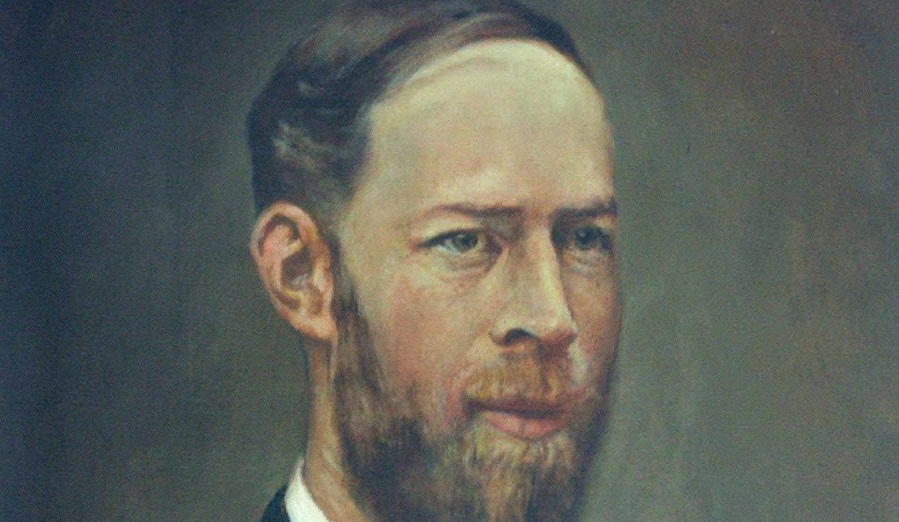Heinrich Rudolf Hertz was a German physicist who first conclusively proved the existence of the electromagnetic waves theorized by James Clerk Maxwell‘s electromagnetic theory of light. The unit of frequency, cycle per second, was named the “hertz” in his honor. Take a look below for 30 more weird and interesting facts about Heinrich Hertz.
1. Hertz was born in 1857 in Hamburg, then a sovereign state of the German Confederation, into a prosperous and cultured Hanseatic family.
2. His father, Gustav Ferdinand Hertz, was a barrister and later a senator.
3. His mother was Anna Elisabeth Pfefferkorn.
4. Hertz’s father converted from Judaism to Christianity in 1834.
5. His mother’s family was a Lutheran pastor’s family.
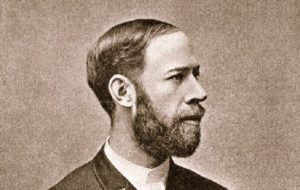
6. While studying at the Gelehrtenschule des Johanneums in Hamburg, Hertz showed an aptitude for the sciences as well as languages, learning Arabic and Sanskrit.
7. He studied the sciences and engineering in the German cities of Dresden, Munich and Berlin, where he studied under Gustav R. Kirchhoff and Hermann von Helmholtz.
8. In 1880, Hertz obtained his PhD from the University of Berlin, and for the next three years remained for post-doctoral study under Helmholtz, serving as his assistant.
9. In 1883, Hertz took a post as a lecturer in theoretical physics at the University of Kiel.
10. In 1885, Hertz became a full professor at the University of Karlsruhe.
11. In 1886, Hertz married Elisabeth Doll, the daughter of Dr. Max Doll, a lecturer in geometry at Karlsruhe.
12. He had two daughters: Johanna, born on October 20, 1887, and Mathilde, born on January 14, 1891, who went on to become a notable biologist.
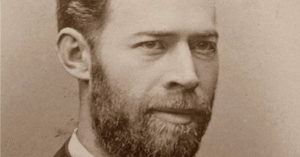
13. Hertz took a position of Professor of Physics and Director of the Physics Institute in Bonn on April 3, 1889, a position he held until January, 1894.
14. During this time, he worked on theoretical mechanics with his work published in the book The Principles of Mechanics Presented in a New Work, published posthumously in 1894.
15. Between 1886 and 1889, Hertz published two papers on contact mechanics that would prove extremely important to the field of electrodynamics.
16. He discovered the photoelectric effect which states that a charged objects loses its charge faster when exposed to ultraviolet light.
17. He didn’t realize the importance and practical implications of his experiments and didn’t foresee their eventual use in wireless communications.
18. It was during his tenure at the University of Bonn that Hertz found that thin metals could be penetrated by cathode rays. It was later developed into the “ray effect.”
19. The Italian Society of Sciences awarded Hertz with the Matteucci Medal in 1888.
20. In 1890, the Royal Society awarded Hertz with the Rumford Medal.
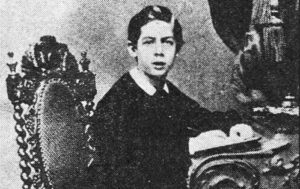
21. Hertz died on January 1, 1894, in Bonn due to granulomatosis with polyangiitis, also known as GPA.
22. Two years prior to his death, he had an operation to cure a migraine but that led to complications that culminated in his death, at the age of 36.
23. When the Nazi regime gained power decades after Hertz’s death, his portrait was removed by them from its prominent position of honor in Hamburg’s City Hall because of his partly Jewish ethnic ancestry.
24. Hertz’s widow and daughters left Germany in the 1930s and went to England.
25. Hertz’s nephew, Gustav Ludwig Hertz, was a Nobel Prize winner, and Gustav’s son, Carl Helmut Hertz, invented medical ultrasonography.
26. His grandnephew, Hermann Gerhard Hertz, professor at the University of Karlsruhe, was a pioneer of NMR-spectroscopy and in 1995 published Hertz’s laboratory notes.
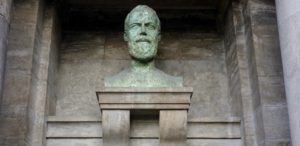
27. In 1928, the Heinrich-Hertz Institute for Oscillation Research was founded in Berlin.
28. In 1969, a Heinrich Hertz memorial medal was cast. The IEEE Heinrich Hertz Medal, established in 1987, is “for outstanding achievement sin Hertzian waves … presented annually to an individual for achievements which are theoretical or experimental in nature.”
29. A crater that lies on the far side of the Moon, just behind the eastern limb, is named in his honor.
30. Hertz is honored in Japan with a membership in the Order of the Sacred Treasure, which has multiple layers of honor for prominent people, including scientists.

